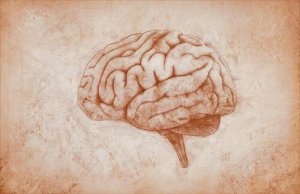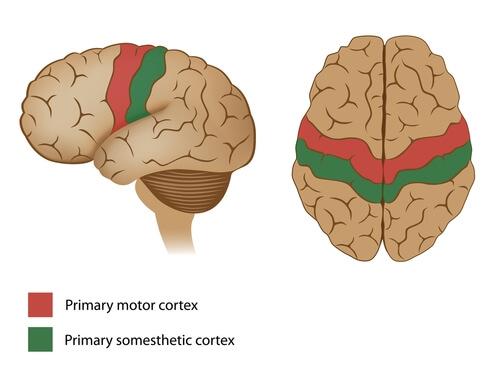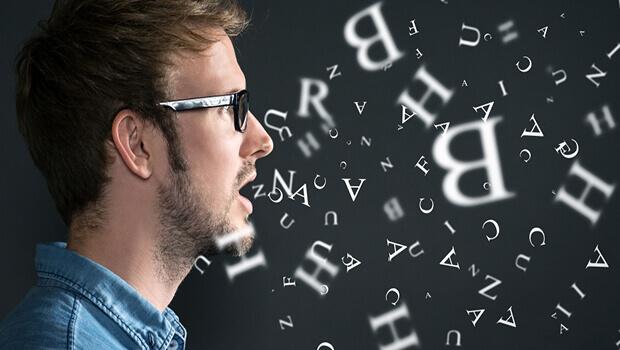The Motor Cortex: Characteristics and Functions

Our brain allows us to plan, eat, run, and even smile. It’s through the complex but fascinating functions of the cerebral motor cortex that we’re able to carry out various day-to-day actions. It’s a part of our brain that helps us control, execute, and plan movement.
In addition, it allows us to react to stimuli, which is essential for our survival. It’s important to mention that this part of our brain doesn’t act on its own. We can move thanks to its various connections and associations with other brain areas.
In this article, we discuss the motor cortex’s location, structures, and functions, as well as the associated pathologies when there’s an injury or when it doesn’t work as it should.
The motor cortex: What is it and where is it located?
The motor cortex is one of the parts of the telencephalon, which in turn is part of the encephalon. Its main function is to promote movement. Through it, we produce and carry out voluntary movements. This region of the brain is located in the frontal lobe, just ahead of the fissure of Rolando and the somatosensory area.
Now, this region is comprised of a region known as Penfield’s homunculus. This area indicates the parts of the cortex where the movement occurs.

Regions of the motor cortex
- Primary motor cortex: This is the main area. It’s responsible for generating the nerve impulses needed to produce voluntary movements. In addition, it’s responsible for sending orders to the voluntary muscles of the body. It’s a region with a low excitation threshold.
- Supplementary motor area: This area coordinates posture. It’s related to the sequence of movements in large muscle groups.
- Premotor cortex: It’s responsible for storing movements that come from past experiences. It simultaneously coordinates and programs the sequence of movements and the activity of the primary motor cortex. It’s located in front of the primary motor cortex and close to the Sylvian fissure. Also, it’s related to the movements required for speech.
- Broca’s area: It’s an area that manages spoken language. It’s located in the inferior frontal gyrus.
- Posterior parietal cortex: This region transforms visual information into motor information.

Pathology of the motor cortex
An injury in this part of the brain can have serious consequences. The reason for this is that we need the motor cortex to carry out most of our day-to-day actions.
Here are some of the possible consequences of an injury to this body part:
- Paralysis: It consists of the total or partial loss of movement in one or more body parts. When the injury occurs in one hemisphere, it’ll manifest on the other side. For example, an injury to the motor cortex of the left hemisphere will affect the right side.
- Apraxias: The person is unable to carry out movements upon request. This means that the person understands the order given to them and has the disposition to carry it out, but lacks control of their motor execution.
- Dysarthria: This is a speech disorder where the person has difficulty articulating sounds or words.
- Agraphia: It consists of the lack of ability to express ideas and thoughts through written language.
- Broca aphasia: In this case, the person suffers an alteration of expressive language. It’s characterized by a difficulty to articulate words, writing alterations, and trouble remembering words.
Further investigations
Researchers are trying to find answers that can help determine how to repair the motor cortex after an injury. This explains why there are so many different studies on it. For example, in February 2018, Lina Bunketorp and her collaborators published an article in the Restorative Neurology and Neuroscience magazine on this topic.
In that article, they exposed how important the motor cortex to movement. In their investigation, they showed the adaptive motor cortex plasticity following grip reconstruction in individuals with tetraplegia.
These approaches help us to better understand how the cortex responds to injuries and treatment. Researchers are trying to find definitive solutions for cortical damage.
In conclusion, the motor cortex is the axis of movement. Without it, we wouldn’t be able to execute any movement.
Our brain allows us to plan, eat, run, and even smile. It’s through the complex but fascinating functions of the cerebral motor cortex that we’re able to carry out various day-to-day actions. It’s a part of our brain that helps us control, execute, and plan movement.
In addition, it allows us to react to stimuli, which is essential for our survival. It’s important to mention that this part of our brain doesn’t act on its own. We can move thanks to its various connections and associations with other brain areas.
In this article, we discuss the motor cortex’s location, structures, and functions, as well as the associated pathologies when there’s an injury or when it doesn’t work as it should.
The motor cortex: What is it and where is it located?
The motor cortex is one of the parts of the telencephalon, which in turn is part of the encephalon. Its main function is to promote movement. Through it, we produce and carry out voluntary movements. This region of the brain is located in the frontal lobe, just ahead of the fissure of Rolando and the somatosensory area.
Now, this region is comprised of a region known as Penfield’s homunculus. This area indicates the parts of the cortex where the movement occurs.

Regions of the motor cortex
- Primary motor cortex: This is the main area. It’s responsible for generating the nerve impulses needed to produce voluntary movements. In addition, it’s responsible for sending orders to the voluntary muscles of the body. It’s a region with a low excitation threshold.
- Supplementary motor area: This area coordinates posture. It’s related to the sequence of movements in large muscle groups.
- Premotor cortex: It’s responsible for storing movements that come from past experiences. It simultaneously coordinates and programs the sequence of movements and the activity of the primary motor cortex. It’s located in front of the primary motor cortex and close to the Sylvian fissure. Also, it’s related to the movements required for speech.
- Broca’s area: It’s an area that manages spoken language. It’s located in the inferior frontal gyrus.
- Posterior parietal cortex: This region transforms visual information into motor information.

Pathology of the motor cortex
An injury in this part of the brain can have serious consequences. The reason for this is that we need the motor cortex to carry out most of our day-to-day actions.
Here are some of the possible consequences of an injury to this body part:
- Paralysis: It consists of the total or partial loss of movement in one or more body parts. When the injury occurs in one hemisphere, it’ll manifest on the other side. For example, an injury to the motor cortex of the left hemisphere will affect the right side.
- Apraxias: The person is unable to carry out movements upon request. This means that the person understands the order given to them and has the disposition to carry it out, but lacks control of their motor execution.
- Dysarthria: This is a speech disorder where the person has difficulty articulating sounds or words.
- Agraphia: It consists of the lack of ability to express ideas and thoughts through written language.
- Broca aphasia: In this case, the person suffers an alteration of expressive language. It’s characterized by a difficulty to articulate words, writing alterations, and trouble remembering words.
Further investigations
Researchers are trying to find answers that can help determine how to repair the motor cortex after an injury. This explains why there are so many different studies on it. For example, in February 2018, Lina Bunketorp and her collaborators published an article in the Restorative Neurology and Neuroscience magazine on this topic.
In that article, they exposed how important the motor cortex to movement. In their investigation, they showed the adaptive motor cortex plasticity following grip reconstruction in individuals with tetraplegia.
These approaches help us to better understand how the cortex responds to injuries and treatment. Researchers are trying to find definitive solutions for cortical damage.
In conclusion, the motor cortex is the axis of movement. Without it, we wouldn’t be able to execute any movement.
All cited sources were thoroughly reviewed by our team to ensure their quality, reliability, currency, and validity. The bibliography of this article was considered reliable and of academic or scientific accuracy.
- Bear, M. F. Connors, B. W., Paradiso, M.A., Nuin, X. U., Guillén, X. V. & Sol Jaquotot, M. J. (2008). Neurociencias: la exploración del cerebro. Wolters Kluwer/Lippincott Williams & Wikins.
- Bunketorp Käll, L., Cooper, R.J. Wangedell, J., Fridén, J., & BjöRNSDOTTER, m. (2018). Adaptative motor cortex plasticity following grip reconstruction in individuals with tetraplegia. Restorative neurology and neuroscience, 36 (1), 73-82.
This text is provided for informational purposes only and does not replace consultation with a professional. If in doubt, consult your specialist.







